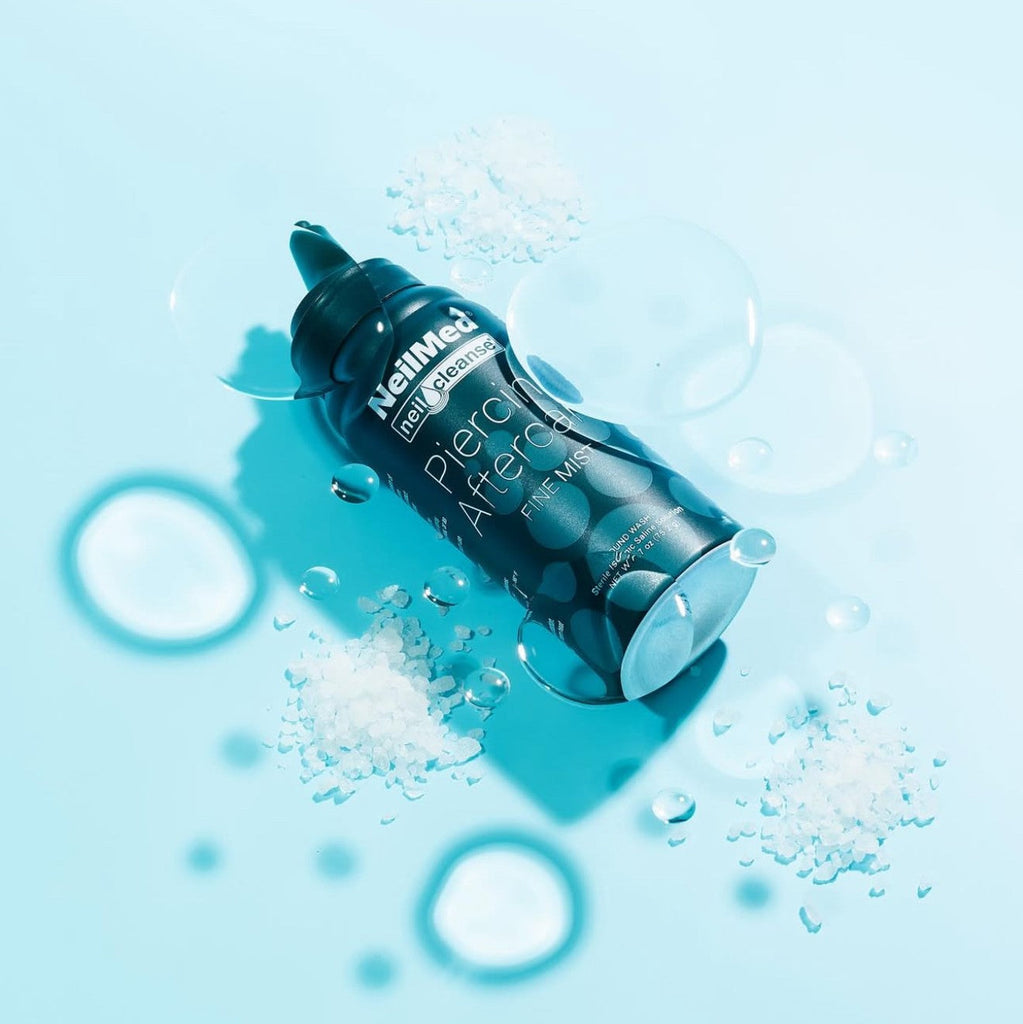The Ultimate Guide to Piercing Aftercare
Posted by KITIJA ZAKITE

Getting a new piercing is exciting, but taking care of it properly is the key to ensuring it heals well and looks great for years to come. In this ultimate guide, we’ll walk you through everything you need to know about piercing aftercare, from the first 24 hours to long-term maintenance.
1. Initial Steps After Getting Your Piercing
The first 24 to 48 hours after getting your piercing are critical for ensuring a smooth healing process. Here’s what you need to do:
Avoid Touching Your Piercing
- Why: Your hands carry bacteria, and touching your piercing can introduce these harmful germs, leading to infection.
- Tip: Always wash your hands thoroughly before you touch your piercing, and avoid unnecessary touching, especially during the initial healing period.
Leave the Piercing Alone
- Why: Don’t twist, turn, or rotate the jewelry. This can cause irritation, prolong healing, and increase the risk of infection.
- Tip: Trust the process—let your body heal naturally without manipulating the jewelry.
2. Cleanliness is Key: How to Clean Your Piercing
Cleaning your piercing correctly is one of the most important parts of aftercare. Here’s how to keep it clean:
Use a Saline Solution or Piercing Aftercare Spray
- Why: Saline is a gentle and safe way to cleanse your piercing without causing irritation.
- Tip: Avoid using alcohol, hydrogen peroxide, or antiseptic solutions, as these can damage your skin and hinder the healing process.
Clean Twice a Day
- Why: Regular cleaning helps prevent infection without over-cleaning, which can dry out the skin.
- How: Spray the solution directly onto the pierced area. If needed, gently clean any lymphatic discharge from the piercing. Be careful when using cotton swabs to avoid fibers getting stuck in your jewelry. Don’t scrub the area—simply let the solution soak for 5–10 minutes.
3. Swelling and Pain: What to Expect
Swelling, redness, and mild discomfort are normal after getting a piercing, especially during the initial healing period. Here’s how to manage it effectively:
Cold Saline Solution for Swelling
- Why: Cold saline can help reduce swelling while also keeping the area clean and free of bacteria.
- How: Chill your saline solution in the refrigerator before use. Repeat this process twice a day, as needed.
- Tip: Avoid applying ice directly to the piercing, as extreme cold can damage the delicate tissue
Pain Management
- Why: Mild pain or tenderness can occur, especially during the first few days.
- How: Over-the-counter pain relievers like ibuprofen can help reduce pain and inflammation. Always follow the recommended dosage.
4. Things to Avoid During the Healing Process
There are certain activities and habits that can interfere with the healing of your piercing. Avoiding these will help ensure a smooth recovery:
Swimming
- Why: Pools, hot tubs, lakes, and oceans can introduce bacteria, which may cause infections.
- Tip: Avoid swimming for at least two weeks after getting your piercing to minimize the risk of infection.
Sleeping on Your Piercing
- Why: Pressing down on your piercing while sleeping can cause irritation, pressure sores, or migration.
- Tip: Sleep on the opposite side of your piercing, or invest in a special pillow designed to prevent direct contact and reduce pressure on the piercing.
Tight or Irritating Clothing
- Why: Tight clothing, especially for piercings like the belly button or nipple, can rub against the jewelry, causing irritation and delaying healing.
- Tip: Choose loose-fitting clothing that won’t put pressure on your piercing.
Avoid Drinking Fermented Drinks
- Why: Fermented drinks like beer or kombucha can increase the risk of irritation for oral or facial piercings due to yeast and other microbes.
- Tip: Skip fermented beverages during the initial healing phase, especially if you have a lip, tongue, or other oral piercing.
Avoid Using Saunas
- Why: Saunas create a warm, moist environment that can promote bacterial growth, leading to potential infections.
- Tip: Refrain from using saunas or steam rooms until your piercing has fully healed.
